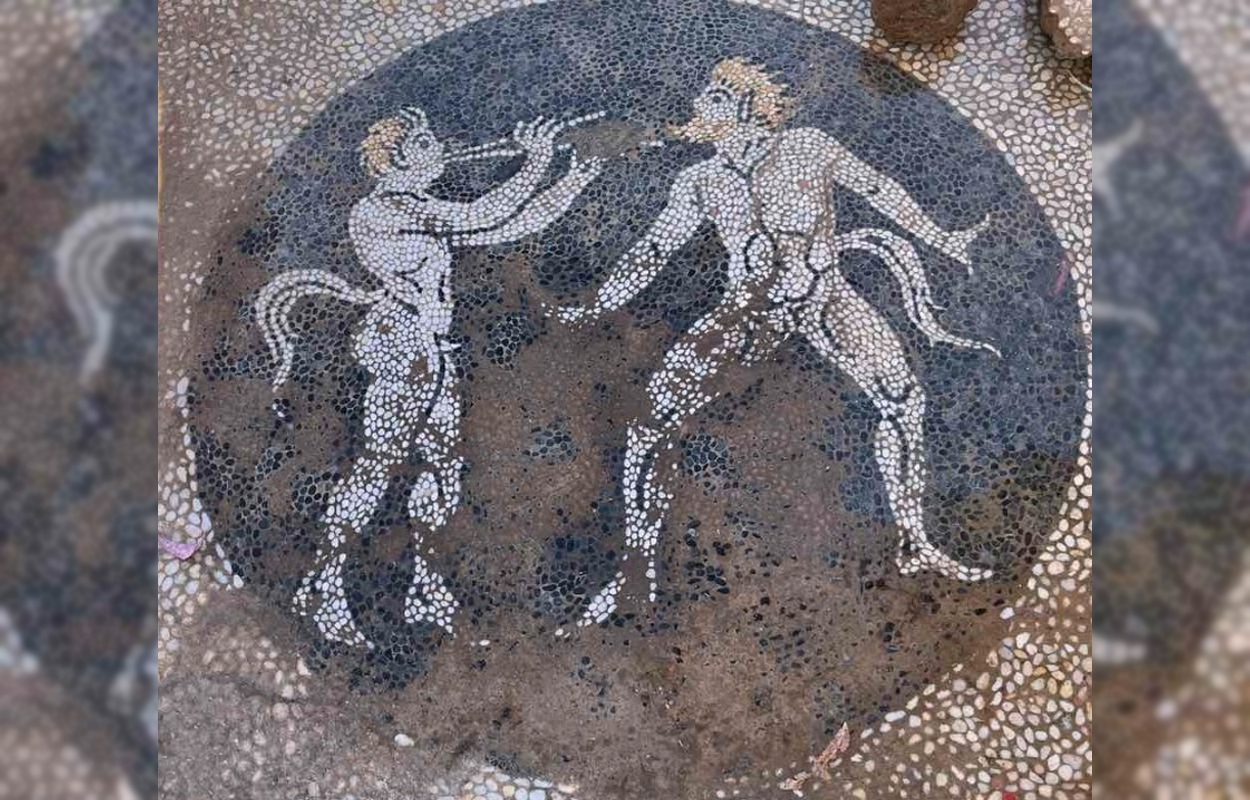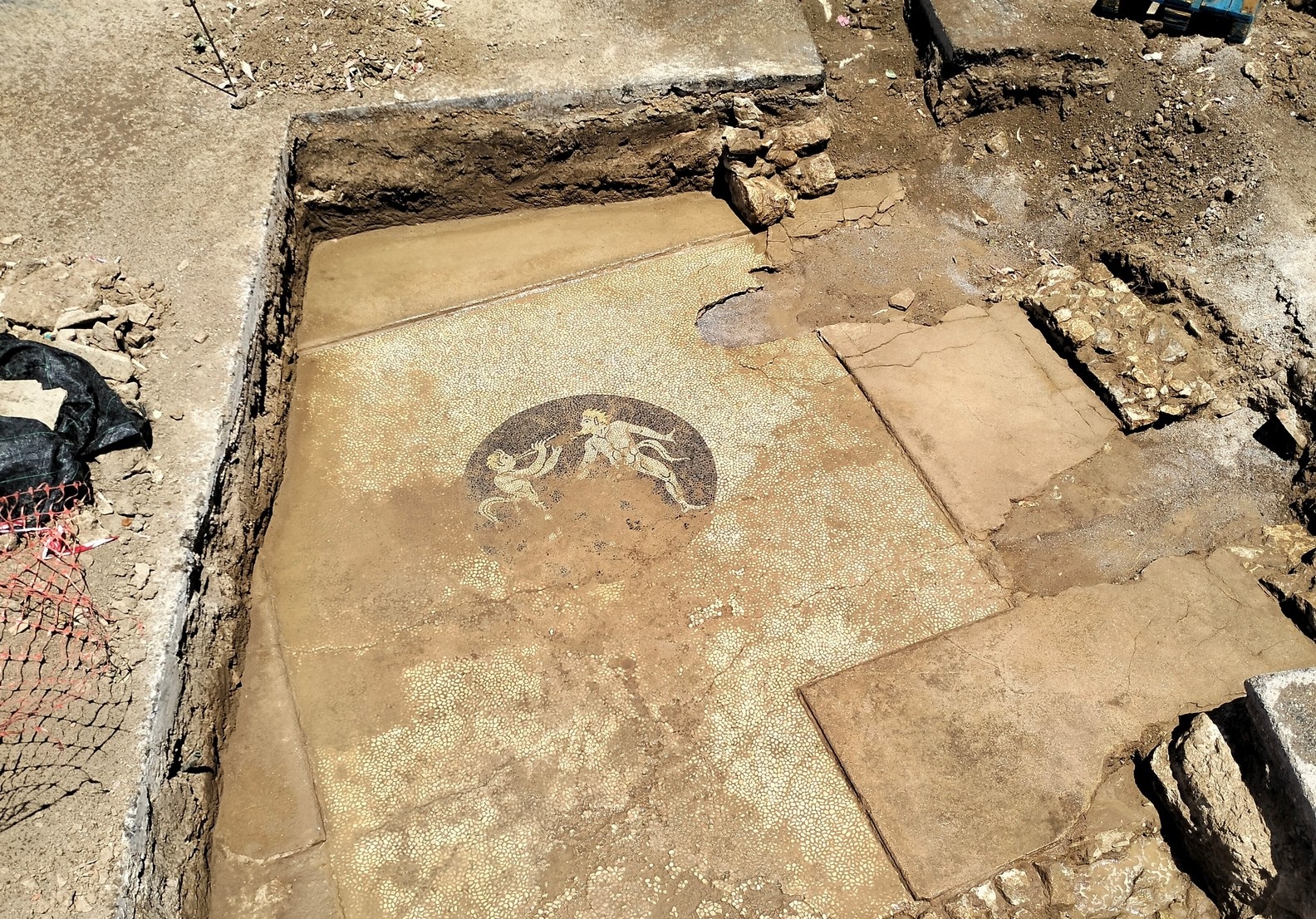Archaeologists excavating in ancient Eretria have discovered a pebbled mosaic floor featuring two naked satyrs.
Eretria was founded on the Greek island of Euboea, emerging as an important polis and trading centre from the 6th and 5th century BC.
The city was described as being involved in several significant historical events. It was listed by Homer in the Iliad as one of the Greek cities which sent ships to fight in the Trojan War.
During the Ionian rebellion against Persia in 499 BC, Eretria and Athens sent aid to their Ionian allies, resulting in the burning of Sardis, the capital of the Persian satrapy of Lydia.
Recent excavations by the Greek Ministry of Culture have unearthed a building near the sanctuary of Daphniforos Apollo, the “Quarter of the Panathenaic Amphorae” and the “House of the Mosaics”.
Within the building interior, archaeologists found a mosaic floor made from natural pebbles, with surviving walls on the south and east sides. The mosaic features a circular black medallion and two naked satyrs, a nature spirit with ears and a tail resembling those of a horse.

Satyrs were considered companions of the god Dionysus, which were thought to inhabit woodlands, mountains, and pastures. The Romans identified satyrs with their native nature spirits, fauns, often shown as a half-human and half-goat creatures.
Excavations also found a raised floor to the north and east sides of the room where reclining couches were likely placed. According to the archaeologists, the room dates from the 4th century BC and served as a banqueting space for celebrations and gatherings.
The area of the building was used as a cemetery during the early Christian era (5th to 6th century AD), where five tombs have been identified within the interior, and five more tombs adjacent to the exterior south wall.
Header Image Credit : Ministry of Culture
Sources : Ministry of Culture





